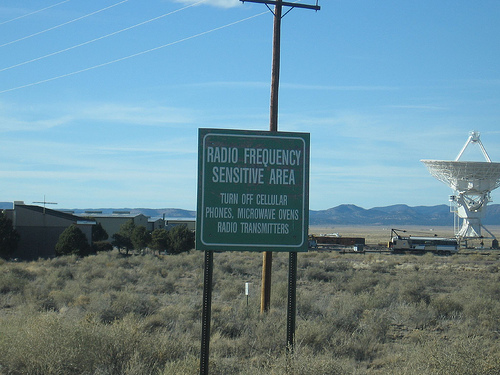FCC to Propose Broadcast Spectrum Auction

WASHINGTON: FCC Chairman Julius Genachowski today said that voluntary relinquishment of broadcast licenses would be part of the agency’s proposed plan to create nationwide, wireless broadband. The chairman revealed the strategy today in remarks he delivered at the New America Foundation.
The FCC’s Broadband Plan is due to Congress March 17. One of the goals of the plan is to free up 500 MHz of spectrum for broadband over the next decade. The reclamation of TV spectrum is part of that plan. This “Mobile Future Auction,” that would allow existing spectrum licensees “such as television broadcasters in spectrum-starved markets, to voluntarily relinquish spectrum in exchange for a share of auction proceeds, and allow spectrum sharing and other spectrum efficiency measures.”
Genachowski said it was necessary to consider reallocating broadcast airwaves for wireless broadband because of what’s come to be accepted as a “looming spectrum crunch.” He said mobile data usage was “exploding,” and that AT&T reported that its mobile data traffic increased 5,000 percent over the last three years.
“That’s not surprising when you consider that a typical smartphone [such as the iPhone] generates 30 times the traffic of a traditional data-enabled phone--and a netbook generates 450 times more traffic,” the chairman said.
He also acknowledged there is already spectrum coming to the market. Including 2008’s 700 MHz auction, the FCC has authorized a three-fold increase in commercial spectrum for mobile broadband. Genachowski said it would not, however, accommodate a 30-fold increase in data traffic. He said that “a broad range of analysts, companies and trade associations participating in our broadband proceeding agree that a clear candidate for allocation is spectrum in the broadcast TV bands.
“They point to a massive amount of unlocked value in that spectrum, which has characteristics that make it particularly suitable for mobile broadband--one study suggests that as much as $50 billion in value could be unlocked if we adopted policies to convert some of the broadcast spectrum to mobile broadband. This suggests that there are inefficiencies in the current allocation.
“A second reason is that the highly valuable spectrum currently allocated for broadcast television is not being used efficiently--indeed, much is not being used at all. About 300 MHz of spectrum have been set aside for broadcast TV. In markets with less than 1 million people, only 36 MHz are typically used for broadcasting. In cities with more than 1 million people, on average about 100 MHz are used. Even in our very largest cities, at most only about 150 MHz out of 300 MHz are used. This is true even after the recent reallocation for digital television, which freed up some spectrum for mobile broadband.”
Genachowski called the Mobile Future Auction a “win-win” for broadcasters.
The National Association of Broadcasters called it a red herring of sorts.
“As a one-to-many transmission medium, broadcasters are ready to make the case that we are far and away the most efficient users of spectrum in today's communications marketplace,” said NAB spokesman Dennis Wharton in a statement. “We look forward to working with policymakers to help expand the roll-out of broadband without threatening the future of free and local television, mindful of the fact that local TV stations just returned more than a quarter of our spectrum following our transition to digital.”
Dave Donovan of the Association for Maximum Service Television concurred with Wharton, adding, “MSTV is struck by the apparent focus on reducing spectrum now used by local television stations to achieve the Broadband Task Force’s objective. We have exclusive use of only 5.1 percent of the so-called beachfront spectrum that broadband services desire. To this end, we have supported a spectrum inventory to assess spectrum use and demand by all entities using spectrum.”
(Image by Terraplanner)
Related stories:
February 23, 2009: “FCC Says 93 Million Americans are ‘Disconnected’”
The main barriers to adoption are cost and literacy.
February 9, 2010<: “iPad Gives another Nudge to Spectrum Reallocation”
The FCC’s Phil Bellaria said the iPad has “set off a new round of reports of networks overburdened by a data flow they were not built to handle.”
February 1, 2010: “President Proposes $4.8 Billion in Spectrum-user Fees”
Auctioned license fees alone are projected to generate $1.6 billion through 2020, perhaps more.
January 21, 2010: “House Subcommittee Passes Spectrum Bills”
H.R. 3125 would require federal agencies to track down who and what is using the airwaves from 225 MHz and 3.7 Ghz; H.R. 3019, the “Spectrum Relocation Improvement Act of 2009,” would create reimbursement framework for incumbent licensees who may be bumped off their spectrum in a reallocation scheme.
January 14, 2010: “Feds Backpedal on Spectrum Grab”
The FCC began floating spectrum reallocation last fall, just weeks after the conclusion of the digital television transition.
January 7, 2010: “Spectrum for Broadband Timeline”
The last year has been a particularly contentious one for the airwaves.
The professional video industry's #1 source for news, trends and product and tech information. Sign up below.
